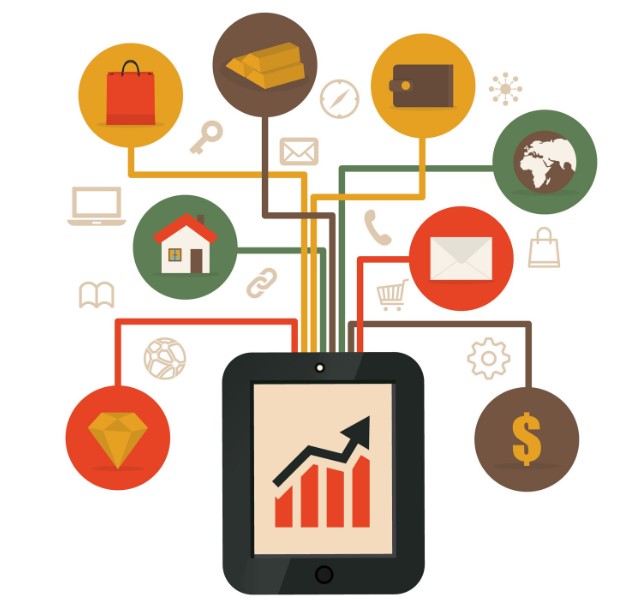Whether you realize it or not, you’re probably already familiar with the core ideas behind digital asset management (DAM). At its heart, digital asset management focuses on organizing, storing, and distributing digital files — everything from images and videos to audio recordings and documents. In a well-structured DAM system, all of these assets live in a centralized, searchable library that makes accessing and reusing them effortless.
If that sounds similar to how you use Dropbox, Google Drive, or any other cloud storage tool, you’re not wrong. The concept is related — but DAM goes a step further. While file storage simply keeps your folders in one place, a digital asset management system adds powerful structure, metadata, and workflow tools that make managing large libraries far more efficient.
WordPress digital asset management follows the same principle. The goal is to make it simple to store, categorize, and retrieve digital assets directly inside WordPress. The challenge, however, is that WordPress doesn’t include many of these capabilities out of the box. To truly turn your site into a functional DAM system, you’ll need additional features provided through plugins or third-party integrations.
And while keeping your site 99.9% secure and hitting sub-one-second load times is crucial, the way you store and deliver your digital files also plays a major role in performance. Efficient digital asset handling can be the difference between a smooth user experience and a page that loads slowly — pushing your visitors away and increasing your bounce rate.
At Codico, our team helps website owners, agencies, and freelance partners understand, organize, and fully leverage digital asset management. Whether you need support for a single WordPress website or a reliable partner to help you manage a large portfolio of client sites, we’re here to back you up and keep your digital workflow running smoothly.
In this article, we’ll take a closer look at what asset management really means. Then, we’ll explore how you can turn WordPress into a practical tool for managing your documents, images, and other digital assets more efficiently.
What Is WordPress Digital Asset Management?
Even a fresh WordPress installation includes a very basic form of digital asset management thanks to the built-in Media Library. It allows you to upload images, documents, and other files with just a few clicks.
However, while WordPress does a decent job at storing assets, it struggles with the other essential parts of digital asset management — cataloging, sharing, and efficient reuse. These are critical pieces of any true DAM system.
Once a file is uploaded, it essentially disappears into the Media Library with no real structure behind it. There’s no taxonomy, tagging, or labeling system to help you categorize assets, track older files, or easily share them with your team. Over time, this lack of organization makes large libraries difficult to maintain.
To turn WordPress into a proper digital asset management solution, you need to extend the platform with additional tools. Most enhancements focus on improving how files are cataloged, organized, searched, and shared — all of which are vital for managing growing collections of images, documents, and media.
With that foundation in mind, let’s explore a few plugins that can help transform WordPress into a more capable DAM system by enhancing key document and image management features.
Read also: Ultimate Guide to Creating a Multilingual WordPress Website
Brandfolder Plugin: A Simple Way to Manage Digital Assets
The Brandfolder plugin brings streamlined digital asset management to your WordPress site by connecting your WordPress installation directly to your Brandfolder account.
If you haven’t used it before, Brandfolder is a clean, cloud-based DAM platform that centralizes your digital assets and makes them easy to organize, search, manage, and share. Everything lives in one place, which helps teams maintain consistency and avoid scattered file storage.
Once the plugin is installed, you can pull your Brandfolder assets straight into your WordPress posts and pages. You’ll also be able to manage your folders directly from the WordPress dashboard and even embed entire Brandfolders, making it simple for external collaborators or clients to access your files without friction.
A quick note — since this plugin depends on the Brandfolder service, you’ll need an active Brandfolder account to use it. The platform isn’t free, so if you’re still searching for a cost-free WordPress digital asset management option, don’t worry — there are more solutions coming up next.
Phraseanet: An Open-Source DAM Solution You Can Integrate with WordPress
Phraseanet is a well-known open-source digital asset management platform that you can download, install, and host on your own server. After setting it up, you can connect it to your WordPress website using the dedicated integration plugin.
Unlike the basic WordPress Media Library, Phraseanet is built for more advanced storage, management, and organization of digital files. Its features are far more robust, making it a strong fit for companies, teams, and larger organizations that handle big volumes of media and require a more scalable DAM system.
File Manager Plugin: A Robust Solution for Managing Documents and Media in WordPress
The File Manager plugin is a widely used tool that brings essential digital asset management features into WordPress. After installation, it adds a dedicated File Manager menu where you can upload, organize, and maintain all of your digital files in one place.
In many ways, File Manager eliminates the need for traditional FTP access. You can create, move, or edit files directly on your hosting server without ever opening an FTP client. Drag-and-drop uploads are supported as well, making the interface simple and intuitive to work with.
The plugin includes built-in search capabilities, allowing you to locate files by name or type. If you prefer browsing over searching, you can also sort files inside the interface for quicker navigation.
With the extended (premium) version, you can enable a front-end file directory, making it easy to share assets with external users or clients. You can also set folder permissions based on user roles, which adds an extra layer of security for sensitive files.
And if your workflow requires individual storage spaces, File Manager allows you to assign private folders to each WordPress user — ensuring that every user has a secure, personal area accessible only to them.
Read also: Boost Your WordPress Site Speed: A Simple Guide

Enhanced Media Library: Bring Taxonomies and Structure to Your WordPress Media Library
If you’re looking to enhance the default WordPress Media Library with real digital asset management features, Enhanced Media Library is one of the strongest tools available.
With this plugin, you can assign both categories and tags to your images, documents, and other media files. Once your assets are labeled, you can quickly sort and filter them by taxonomy, making it much easier to locate exactly what you need — even in large media libraries.
Enhanced Media Library also supports media sharing through taxonomy-based embedding. That means you can display groups of media files inside posts or pages simply by referencing specific categories or tags.
If your goal is to organize and manage files directly within the native WordPress interface — without switching to an external DAM system — Enhanced Media Library is easily one of the most effective choices.
Connecting Your Digital Asset Management System to WordPress: Integration Options
If you’re already working with a digital asset management system and want to connect it with WordPress, you’ll need a practical way to integrate the two. Earlier, we covered two plugin-based options (Brandfolder and Phraseanet), but not every DAM platform provides a dedicated WordPress plugin out of the box.
When native integrations aren’t available, one of the simplest alternatives is to use embed codes. These codes let you pull media directly from your digital asset management system into WordPress without needing a full plugin-level connection.
Using embed codes removes the repetitive step of downloading files from your DAM and then re-uploading them into WordPress. Instead, you just copy the code from your DAM platform and paste it into WordPress — and the asset appears instantly.
This approach also prevents duplicate versions of the same file. Any updates you make inside your DAM automatically apply everywhere that asset is embedded in WordPress, ensuring consistency across your site.
On top of that, embed-based integrations allow you to track where your media is displayed and how often users interact with it — something you lose when files are uploaded directly to the WordPress Media Library.
If you’re not tied to a specific DAM yet, platforms like ResourceSpace offer easy export and integration options for external content management systems, including WordPress.
So when a direct WordPress plugin isn’t available, embed codes become the most efficient way to connect your digital asset management system to WordPress — without having to upload every single image or file manually.
Read also: How to Improve Time to First Byte (TTFB) for Your WordPress Site
Wrapping Things Up
On its own, WordPress isn’t designed to function as a full-scale digital asset management system. However, with the right combination of plugins and integrations, you can turn it into a powerful environment for organizing, storing, and managing your media files.
At the very least, you can enhance the native Media Library with better cataloging and filtering tools. And when your workflow requires something more advanced — such as structured document libraries or enterprise-level media handling — plugins like Brandfolder or Phraseanet can fill those gaps and make your file management far more efficient.
The most important thing is to keep your digital assets from getting buried inside the default WordPress Media Library. Choose a system that helps you store, categorize, and access your files quickly — and keeps your content workflow clean and predictable.
If you’d like to share your thoughts or continue the discussion, feel free to connect with us on social media — we’re always open to ideas and feedback.
Need help building a cleaner, more scalable workflow?
If you found this guide useful, you might also benefit from Codico’s dedicated WordPress support and technical services. Our team works with businesses, agencies, and creators to keep their websites fast, secure, and easy to manage — so you can focus on what matters most.
Whether you need:
- ongoing WordPress maintenance,
- performance optimization,
- better media and asset organization,
- security hardening,
- or technical support for multiple client sites —
Codico is here to support your digital ecosystem with reliable, expert-level solutions.
 Subscribe
Subscribe




